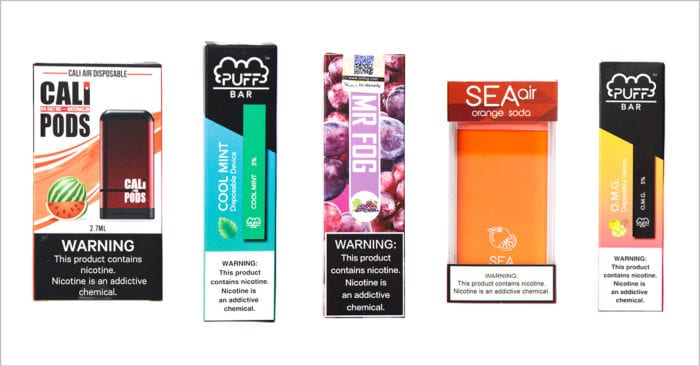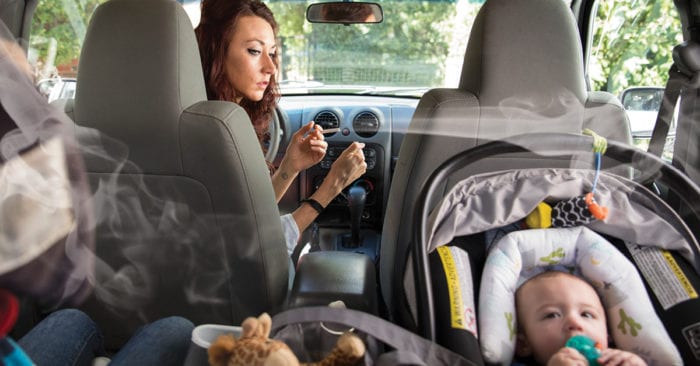The Progress of Policy
A 2019 CDC report revealed Oklahoma’s statewide smoking rate stands at 18.9%. Compared with the national average of just 13.7%, it’s clear that we have some work to do. Of course, Oklahomans aren’t predisposed to nicotine addiction. Instead, our higher smoking rate reflects ineffective (and nonexistent) tobacco policies. When state policy is weak, our collective health — and economy — suffer.
Together, Oklahomans can create a healthier state — and we’re gaining traction. Let’s take a look at a few key policies that will protect the health and wellbeing of Oklahomans for generations to come.

100% Clean Indoor Air
Oklahoma is one of only three states without any comprehensive policies supporting smokefree public spaces. It’s still legal to smoke in hotels, bars and home daycares when children aren’t present. That’s Not OK.
Why It Matters:
Exposure to secondhand smoke means Oklahomans are at a greater risk of developing lung cancer and heart disease. After all, secondhand smoke is a proven killer filled with Class A carcinogens.
Instead of fighting these preventable diseases in the hospital, state leaders could prevent them from ever occurring with carefully crafted policy. Stronger tobacco policies could save the state billions in healthcare costs.
Proof of Concept:
We have plenty of other states to look to as examples of success. North Carolina banned smoking in restaurants and bars in 2010. In the first year of the law, emergency room visits for heart attacks dropped 21%. These laws benefit health AND business. The State of Washington implemented a comprehensive smokefree law, and the economic impact was incredible. Revenues at bars and taverns were $105.5 million higher than projected.
The good news is that 77% of Oklahomans support a law making public places smokefree. Other states agree — clean indoor air is a right, not a privilege. Here in Oklahoma? It’s time to put health over the tobacco industry’s profits.

Flavors
Big Tobacco uses flavors to hook customers into a lifetime of nicotine addiction. Flavors are engineered to eliminate the harsh taste that turns first-time tobacco users off. That’s important because Big Tobacco NEEDS to hook new customers. Their business depends on it.
Partial Ban:
A January 2020 flavor restriction was mandated by the FDA. The new regulation was aimed at reducing the prevalence of vape and e-cigarette flavors. However, the ruling is littered with loopholes that leave many flavors on the market, including most flavors in the disposable vape product category. “Disposable vapes” are devices that are ready to puff straight out of the box, no juice or pods needed.
In February 2020, the U.S. House of Representatives passed a bill that effectively bans the sale of all flavored tobacco and e-cigarettes, including menthol. The bill currently awaits Senate approval and, if passed, the President’s signature. A comprehensive flavor ban would strike a blow against Big Tobacco and their most deceptive tactic.
Why It Matters:
Flavors attract more than just youth and young adults. For decades, African Americans have been maliciously targeted by Big Tobacco’s flavoring strategy. How? Menthol. This flavor, combined with highly targeted messaging, has led to 80% of African American smokers reporting they prefer menthol cigarettes. All flavors, including menthol, are a coordinated assault on our health in exchange for profit.
Oklahoma lawmakers don’t need to wait for a full federal flavor ban. Instead, they can enact one on behalf of all Oklahomans, sending Big Tobacco a powerful message: our health is our right, not for your profit.

Kids in Cars
The Latest:
In Oklahoma, smoking in a vehicle with children inside is still legal. This issue has been raised by lawmakers before. In 2017, an Oklahoma House committee cleared measures that would’ve banned smoking in a car with a child present. However, this bill never made it to the House floor for a vote. It begs the question: why not?
Why It Matters:
There is no safe level of secondhand smoke. With developing bodies and lungs, children are especially sensitive. Exposure to secondhand smoke and vapes leaves kids at greater risk for developing serious health issues such as ear infections, lung infections, asthma, bronchitis and more. Our kids are suffering.
What We Can Do:
Reducing exposure to secondhand smoke and vapes plays a crucial role in preventing kids from smoking later in life. Plus, secondhand smoke is filled with 7,000 chemicals — 250 of which are known to be harmful, and at least 70 of which are cancer-causing. With this in mind, it makes you wonder: How is smoking with a kid in the car still legal?
We know the facts. We know the consequences. It’s time to take action.

Looking Forward
It’s important to note that individual policies won’t singlehandedly end the scourge of tobacco. However, comprehensive tobacco prevention policies will allow Oklahomans to breathe easier, save money and live happier, healthier lives. Kids will grow up to develop strong and healthy lungs. Families and individuals won’t be saddled by the expense of the addiction to nicotine. And our state will start to free itself from the grasp of Big Tobacco. The case for stronger tobacco policies is clear — our health, economy and future depend on it.
Learn more about how to create a tobacco-free Oklahoma by signing up for our Tobacco Stops With Me newsletter.







